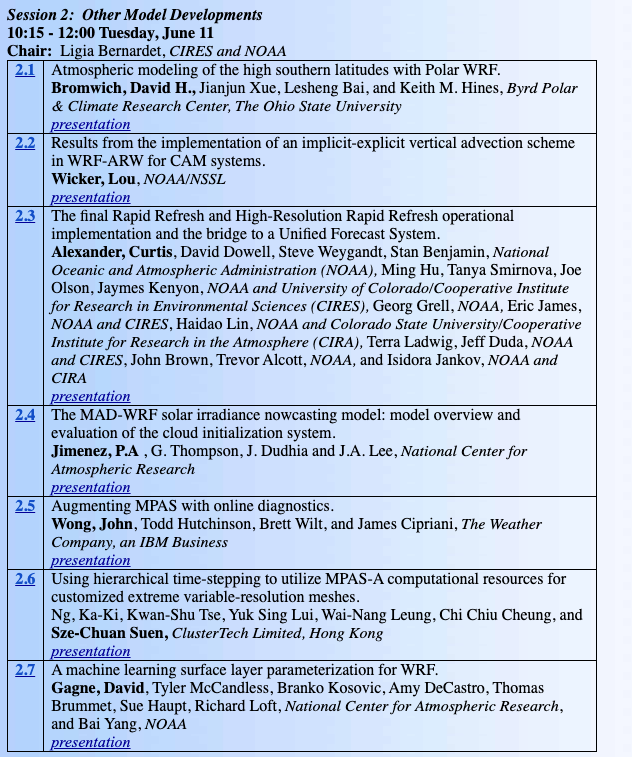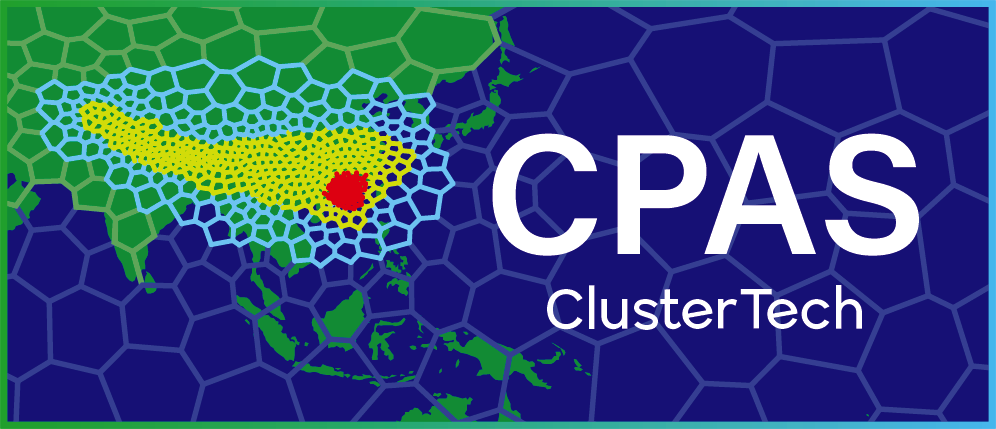Hosted by the US National Center for Atmospheric Research (NCAR), the 2019 Joint WRF/MPAS Users’ Workshop was held on 10-14 June, 2019 in Boulder, Colorado. As one of the most important academic events for meteorology industry, the event attracts over 100 scientists and researchers worldwide. ClusterTech was honored by being selected to speak at the workshop with our innovative development on MPAS-A.

Ms. Sze-Chuan Suen, representative of ClusterTech, introduced the ClusterTech Platform for Atmospheric Simulation (CPAS) in a talk entitled “Using hierarchical time-stepping to utilize MPAS-A computational resources for customized extreme variable-resolution meshes”. She elaborated on several key features like customized mesh generation and hierarchical time-stepping and shared case studies, e.g. the comparison of atmospheric simulation between using CPAS and MPAS-A in terms of computational resource usage and accuracy. Her speech attracted great interest and positive comments that CPAS has made promising improvements on MPAS-A usage.
CPAS is a cloud-based service platform which implements customised mesh generation and hierarchical time-stepping on Model for Prediction Across Scales - Atmosphere (MPAS-A (v6.3)). This enables CPAS to better serve the computational needs of numerical atmospheric model users by avoiding small timestep on large cells, significantly boosting efficiency.
For more information and free trial, please visit CPAS’ official website: www.cpas.earth
About Joint WRF/MPAS Users’ Workshop
This is a joint workshop for WRF (Weather Research and Forecasting Model) and MPAS-A. (The Model for Prediction Across - Atmosphere). The MPAS-A model is a global nonhydrostatic atmospheric model that has been developed for weather, climate, and regional climate applications. Its horizontal mesh is based on an unstructured spherical centroidal Voronoi tesselation (nominally hexagons) with C-grid staggering that permit both quasi-uniform and variable-resolution configurations. MPAS-A numerics are essentially those used in WRF-ARW adapted to the Voronoi mesh, and the model uses a subset of WRF physics.
